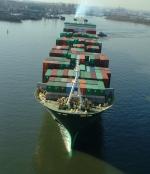Why should I calculate density or specific gravity?
(Courtesy of the Science Education Research Center Carlton University)
By definition, density is mass divided by volume. It’s a measure of total space or volume taken up by stuff or a mass. As an example a kilogram each of iron and cotton would weigh (mass) the same, but a kg of iron occupies very little space (volume) as compared to a kg of cotton. This is where density plays a major role.
Densities are critical for many uses. One of the most critical is that the density of a substance will determine if it will float on another. Less dense substances will float on (or rise through) more dense substances. Here are some examples of how this explains everyday occurrences:
|
• Have you wondered why hot air balloons rise? When the air is heated, it becomes less dense until the balloon's total density is less than that of the atmosphere; A hot air balloon is literally floating on the denser, colder air. • Have you ever noticed in a lake or the ocean that water is warmer at the surface and colder at the bottom? This is because the warmer water is slightly less dense and, as a result floats on the denser, colder water • Do you know why volcanoes erupt? The main reason that magma rises to the surface to erupt at volcanoes is because it is less dense than the rocks that surround it. • A huge boat or ship weighs a lot, but it its density must be less than 1.0 g/cm³ because it is floating. |
|
A ship floating on water is a great illustration of the difference between mass and density. A ship must have a density of less than 1.0 g/cm³ (the density of water), or it will sink. Ships have a large mass, because they are made of steel, but because they have a large volume, their density is less than 1.0 g/cm³. If enough mass is added to them such that their density goes above 1.0 g/cm³, they will sink. |
 |
Other examples would also include:
|
• atmospheric gases – why CO₂ from volcanoes stays close to the ground and poses a hazard. • boats and ships – because density and buoyancy are closely connected. Water (H₂O) has a density of 1.0g/cm³, a boat or ship fully loaded must have a density below 1.0g/cm³ or it will sink. • fluids – how liquids and/or gases interact. • geology – why continents (granite) as compared to the sea-floor (basalt)seem to float higher on the mantle. • moving or shipping items and freight – more dense objects will take more energy/fuel to move and will thus cost more to ship. • temperature – cooler stuff is more dense than hotter stuff because cooler stuff has its particles more closely packed together, hotter stuff has particles that spread apart. • viscosity – density directly affects how thick or thin a fluid is. |
In the geosciences, density is used:
|
• isostasy – determining how high continents will sit on the mantle. • plate tectonics – mechanisms that drive plate tectonics. • minerals – determining the name of a mineral through its density. • rocks – determining the name and composition of a rock by its density. • the hypsometric curve – examining the causes of elevation variation on earth. • oceanography – some ocean currents and ocean circulation is controlled by density. |